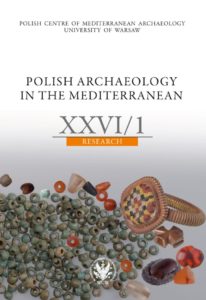Mammals in the economy of ancient Porphyreon (Lebanon)
Mammals in the economy of ancient Porphyreon (Lebanon)
Author(s): Joanna Piątkowska-MałeckaSubject(s): Archaeology, Agriculture, Ancient World
Published by: Wydawnictwa Uniwersytetu Warszawskiego
Keywords: Levant; archaeozoology; animal husbandry; hunting; pastoralism;
Summary/Abstract: An archaeozoological analysis of mammal remains recovered from the dwelling units and streets of ancient Porphyreon excavated in 2009, 2010 and 2012, gives insight into the importance of mammals for the residents of this quarter in succeeding periods: from the Iron Age through the Persian and Hellenistic periods to Byzantine times. Husbandry lay at the base of the animal economy and was supplemented with hunting various species of gazelle. Cattle, sheep and goat were the most numerous livestock species represented in the archaeological record. The high percentage of cattle observed in Iron Age deposits could have resulted from the agricultural lifestyle of the population. Starting from the Persian period, sheep and goat played the most prominent role in the animal economy, implying a pastoral model of husbandry. Raising goats for meat was more significant initially; from the Hellenistic period onwards, the number of sheep reared for milk and wool increased. Pigs constituted a minor percentage of the livestock. The presence of equid remains, including horse and donkey, was confirmed for the Persian period, when these animals were used for transportation.
Journal: Polish Archaeology in the Mediterranean
- Issue Year: 1/2017
- Issue No: XXVI
- Page Range: 453-473
- Page Count: 21
- Language: English

